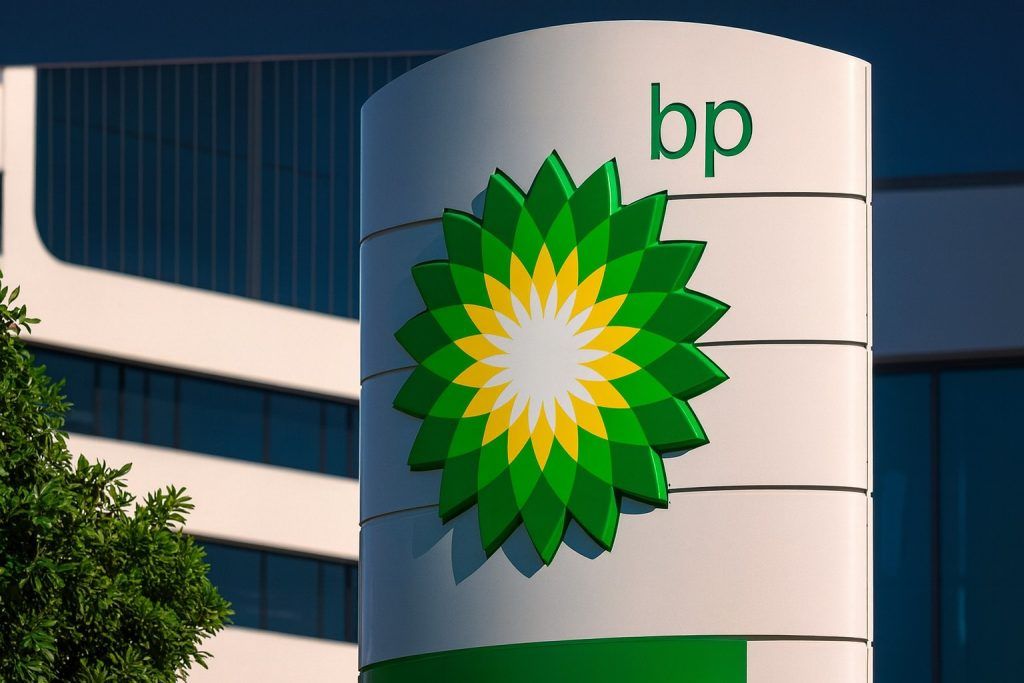As the London Stock Exchange reopens on Monday, 17 November 2025, AstraZeneca PLC (LSE: AZN, Nasdaq: AZN) is one of the most important stocks to watch. The pharma giant has just delivered forecast‑beating Q3 results, hit fresh record highs, secured shareholder backing for an upgraded New York listing and kept its drug pipeline buzzing with new data and approvals – all while navigating political noise on drug pricing in both the US and UK. [1]
Below is a concise pre‑market briefing to help you understand where the AstraZeneca share price stands going into the 17 November session and what could drive sentiment.
Key takeaways before the 17 November open
- Trading near record highs: AstraZeneca closed on Friday, 14 November around 13,532p in London, close to all‑time highs after briefly touching about £134.6 per share earlier in the week, valuing the company near £210bn. [2]
- US ADRs also at the top end of their range: The US‑listed ADRs closed Friday at about $88.20, near their 12‑month high around $89–89.5, with a forward P/E in the low‑30s and a consensus target near $86. [3]
- Q3 2025 beat but guidance unchanged: Revenue grew around 10% in Q3 to $15.2bn, with core EPS up about 12% and both metrics topping analyst expectations. However, full‑year guidance was maintained at high single‑digit revenue growth and low double‑digit EPS growth. [4]
- Pipeline momentum remains a major bull case: AstraZeneca has logged 16 positive Phase III trials so far in 2025 and 31 regulatory approvals, including new data for Fasenra in rare disease, and expanded approvals for Tezspire and Koselugo. [5]
- Obesity and weight‑management push is in focus: The company has exercised its option to acquire obesity start‑up SixPeaks Bio and is building a pipeline of GLP‑1 and combination agents (e.g., AZD5004, AZD6234, AZD9550) to compete with Novo Nordisk and Eli Lilly. [6]
- Listing shake‑up approved: Shareholders have overwhelmingly backed a direct NYSE listing and a “harmonised listing structure” across London, Stockholm and New York, with the new NYSE structure scheduled to start on 2 February 2026. [7]
- Regulatory and political noise still present: The UK industry body has ruled AstraZeneca breached the promotional code over Symbicort marketing, and CEO Pascal Soriot has publicly warned the NHS could miss out on cutting‑edge drugs without higher spending, underlining tensions with UK policymakers. [8]
- Macro backdrop is volatile: UK equities sold off sharply on 14 November after a UK tax‑policy U‑turn triggered a jump in gilt yields – yet AstraZeneca still managed to notch another record close, highlighting its defensive and growth appeal. [9]
Where the AstraZeneca share price stands now
Near record territory in London
As of the close on Friday, 14 November 2025:
- Last close (LSE): roughly 13,532p
- Intraday range: about 13,408p – 13,574p
- Market capitalisation: around £209–210bn, making AstraZeneca firmly the largest UK‑listed company. [10]
From Monday 10 to Friday 14 November, AstraZeneca’s London shares have risen a little over 3%, outpacing a UK market that sold off into the weekend. [11]
On 11 November, shares surpassed their previous 2024 peak, hitting an intraday high of about £134.6, with Reuters reporting a market value close to £210bn as both AstraZeneca and the FTSE 100 hit new records on hopes of Bank of England rate cuts. [12]
US ADRs: at or above analyst targets
In New York:
- Regular‑session close (14 November): about $88.20 per ADR, per Nasdaq/Yahoo Finance data. [13]
- Recent high: MarketBeat notes a 12‑month high around $89.4, with the stock having recently traded above consensus analyst target price (~$86). [14]
- Valuation snapshot: P/E ratio around 33x, PEG about 1.5, and beta roughly 0.3–0.4, underlining the stock’s relatively low volatility compared with the broader market. [15]
For London traders heading into Monday’s open, the takeaway is that global investors are already pricing in a lot of optimism – both about AstraZeneca’s near‑term earnings and its longer‑term pipeline.
Earnings backdrop: strong Q3, guidance steady
AstraZeneca’s 9M and Q3 2025 results released on 6 November are the main fundamental anchor for the current rally. [16]
Key numbers from Q3 (three months to 30 September 2025):
- Total revenue: about $15.19bn, up 10% at constant exchange rates, beating consensus (~$14.79bn). [17]
- Core EPS: roughly $2.38, up 12% at constant exchange rates and ahead of expectations (~$2.29). [18]
- US revenue: about $6.55bn, up 9%; China revenue grew ~5% to $1.76bn. [19]
- Net profit: press coverage puts year‑on‑year growth in Q3 profit before tax around 70–77%, helped by strong oncology and cardiovascular drugs. [20]
For the first nine months of 2025:
- Product revenue (product sales + alliance revenue) reached just over $43bn, up about 10–11% year‑on‑year. [21]
- Core EPS grew around 15% to just above $7 per share, according to company materials and secondary summaries. [22]
Despite this momentum, AstraZeneca kept full‑year 2025 guidance unchanged, still targeting:
- High single‑digit percentage revenue growth, and
- Low double‑digit percentage growth in core EPS, at constant exchange rates. [23]
Some analysts had hoped for a guidance upgrade after such a strong quarter, which explains why the earnings reaction, while positive, wasn’t euphoric. The market is now focused on whether the company can sustain this trajectory into 2026 as older products face patent erosion.
Pipeline: from oncology to rare disease and beyond
Phase III momentum
Management highlighted an “unprecedented” 16 positive Phase III trials announced so far in 2025, with four since the previous results update – including: [24]
- Baxdrostat in resistant hypertension (Bax24 trial), which met its primary endpoint and showed a clinically meaningful reduction in 24‑hour ambulatory systolic blood pressure. [25]
- Enhertu and Datroway in breast cancer, including high‑impact data in early and metastatic disease. DESTINY‑Breast05 showed Enhertu improved invasive disease‑free survival vs T‑DM1 in high‑risk HER2‑positive early breast cancer, while TROPION‑Breast02 found Datroway improved overall and progression‑free survival in first‑line metastatic triple‑negative disease. [26]
These readouts help support AstraZeneca’s narrative that oncology remains a long‑term growth engine, even as some older drugs approach loss of exclusivity.
Fasenra: expanding beyond asthma
On 7 November, AstraZeneca reported statistically significant results from its NATRON Phase III trial of Fasenra (benralizumab) in hypereosinophilic syndrome (HES), a rare, serious disease with limited treatment options. The trial showed Fasenra: [27]
- Delayed the time to first disease flare or worsening,
- Cut the annualised rate of HES flares by around 65–66% vs placebo, and
- Delivered meaningful improvements in fatigue scores.
The company plans regulatory filings based on NATRON, and full results are due to be presented at the ASH 2025 meeting in December. This strengthens the argument that Fasenra can become a multi‑indication biologic beyond severe asthma.
Tezspire, Koselugo and Saphnelo: late‑stage immunology and rare disease
AstraZeneca has also been busy broadening labels and approvals in immunology and rare disease: [28]
- Tezspire (tezepelumab) was approved in both the EU and US in October 2025 for chronic rhinosinusitis with nasal polyps (CRSwNP), adding a second major indication.
- Koselugo (selumetinib) won EU approval for symptomatic, inoperable plexiform neurofibromas in adult NF1 patients, following a successful KOMET Phase III trial.
- Saphnelo (anifrolumab) received a positive CHMP opinion for subcutaneous self‑administration in systemic lupus erythematosus, based on the TULIP‑SC Phase III trial.
These updates matter because they provide incremental revenue growth across multiple smaller but high‑value indications, diversifying AstraZeneca’s earnings base.
Obesity and weight‑management: AstraZeneca’s next big swing
The global obesity drug market remains dominated by GLP‑1 leaders Novo Nordisk and Eli Lilly. AstraZeneca’s response has been to build a portfolio rather than a single flagship product.
Recent developments include:
- Exercising an option to acquire SixPeaks Bio, a private obesity‑focused biotech, broadening AstraZeneca’s footprint in weight‑management and muscle‑preservation approaches. [29]
- Advancing multiple obesity and metabolic candidates, notably AZD5004 (an oral GLP‑1 agonist), AZD6234 and combinations with AZD9550, aimed at offering differentiated profiles vs injectable incumbents. [30]
While none of these programmes are yet near commercial launch, investors are clearly attributing option value to this pipeline, especially given AstraZeneca’s plan to build a $4.5bn manufacturing facility in Virginia to support its metabolic and weight‑management portfolio. [31]
Heading into Monday’s trade, any additional obesity data, partnership news or comments from management at upcoming investor conferences could move the share price, given how much the sector drives sentiment across big pharma.
Listing overhaul: what the NYSE move means for London
A big strategic story hanging over AstraZeneca’s share price is its listing harmonisation plan:
- In late September, AstraZeneca announced it would replace its US ADRs on Nasdaq with a direct listing of ordinary shares on the NYSE, creating a single global class of shares across LSE, Nasdaq Stockholm and NYSE. [32]
- On 3 November, shareholders approved new articles of association at a General Meeting, with over 99% of votes cast in favour, easily clearing the 75% threshold. [33]
- Reuters and the Financial Times report the new NYSE structure is scheduled to begin trading on 2 February 2026, while AstraZeneca remains headquartered and tax‑resident in the UK with its primary listing in London. [34]
For Monday’s session, the decision’s psychological impact on London is almost as important as any mechanical effect:
- It reinforces AstraZeneca’s US growth pivot, with more than 40% of sales already coming from the US, and over $50bn of US investment committed over the next five years. [35]
- It may, over time, increase US ownership and liquidity in the stock, but AstraZeneca has stressed that FTSE 100 inclusion and its UK base are not changing. [36]
Short‑term, traders will be watching for any index‑related flows or arbitrage signals between London and US trading as the new structure approaches – but Monday’s open is more likely to be driven by fundamentals and macro conditions than by the listing mechanics themselves.
Regulatory and political overhangs
Symbicort marketing breach
On 24 October 2025, the UK’s Prescription Medicines Code of Practice Authority (PMCPA) ruled AstraZeneca in breach of the industry code over claims relating to its asthma drug Symbicort on a promotional website: [37]
- The site incorrectly suggested all newly diagnosed asthma patients aged 12+ should receive Symbicort as “as‑needed” reliever therapy, which did not align with national guidelines.
- AstraZeneca accepted the claim was misleading and updated the website, while disputing that patient safety had been jeopardised.
The ruling raises reputational and compliance questions, though there is no immediate large financial penalty. Still, it’s something risk‑conscious investors will keep in mind.
NHS pricing standoff and UK investment
In early November, CEO Pascal Soriot warned publicly that, unless the NHS pays more for innovative medicines, the UK risks a future where it can only afford generic drugs. [38]
Key points from that debate:
- Soriot argued that cost‑effectiveness thresholds used by NICE haven’t kept pace with inflation and need a “substantial adjustment”.
- Pharma industry groups say the current UK rebate scheme, where companies pay back roughly a quarter of revenues to the NHS, is far higher than in France or Germany. [39]
- AstraZeneca has already paused or scrapped nearly £2bn of UK investments, including a vaccine facility in Liverpool and a new research centre in Cambridge, while simultaneously committing $50bn of investment in the US. [40]
For the share price, this UK standoff matters mainly as a medium‑term policy risk and in the framing of AstraZeneca’s global footprint. There’s no sign of an immediate earnings hit, but it contributes to the narrative that AstraZeneca is shifting its centre of gravity toward the US.
Insider activity and institutional flows
Recent regulatory filings and institutional news give a mixed but nuanced picture:
- On 7 November, CEO Pascal Soriot notified the company that he had gifted 136,537 ordinary shares to family members for nil consideration. [41]
- On 13 November, CFO Aradhana Sarin sold 15,000 ADRs at around $88.6, according to a director/PDMR shareholding notice – a significant but not unusual transaction for executive diversification. [42]
- MarketBeat reports that FDx Advisors trimmed its stake in AstraZeneca by about 34% in Q2, but large managers such as Jennison Associates added over 1.6m shares, and overall institutional ownership stands above 20%. [43]
- Another MarketBeat piece notes Allianz SE increased its position by 148.6%, buying 4,315 shares to hold 7,219 ADRs worth roughly $500k. [44]
In aggregate, institutional behaviour still tilts constructively toward AstraZeneca, even if some profit‑taking is occurring after the recent rally.
Analyst sentiment and valuation
According to MarketBeat and other compilation sites:
- AstraZeneca carries a “Moderate Buy” consensus rating. [45]
- The average 12‑month target on the ADRs is around $86, slightly below current prices, reflecting how far the stock has already run. [46]
- Recent moves include:
- Deutsche Bank downgrading the stock to Sell in mid‑October, flagging valuation concerns after a strong run.
- Jefferies initiating or resuming coverage with a Buy, pointing to under‑appreciated oncology and obesity optionality. [47]
The tension is clear:
- Bulls see a company with a deep, productive pipeline, double‑digit earnings growth, a powerful US footprint and a new obesity strategy – all of which could plausibly support further upside over the medium term.
- Bears worry that at more than 30x earnings and near record highs, a lot of that optimism is already in the price, leaving the shares vulnerable if any major trial disappoints, pricing pressure intensifies, or US macro conditions worsen.
Macro conditions ahead of Monday’s open
Friday’s UK session was dominated by politics and bonds, not individual stock news:
- UK indices suffered their sharpest declines in months as reports emerged that Chancellor Rachel Reeves would ditch planned income tax rises, sending gilt yields sharply higher and putting the government’s fiscal credibility under scrutiny. [48]
- The FTSE 100 fell around 1.6–1.9%, but AstraZeneca buckled the trend, inching higher to another record close near 13,529p, according to market summaries. [49]
AstraZeneca’s ability to rise on a down day underlines its status as a defensive growth stock: global healthcare exposure, dollar revenues and a strong pipeline can make it attractive when domestic UK policy is in flux.
For Monday 17 November, traders will be watching:
- Any fresh headlines on the UK Budget (scheduled later this month), gilt yields and sterling.
- US macro and rates expectations, given AstraZeneca’s large US exposure.
- How investors digest the Health Equity Investor Event AstraZeneca held on 15 November, and the run‑up to three investor conferences on 18, 19 and 26 November. [50]
What to watch on AstraZeneca for the week ahead
Here are the main AstraZeneca‑specific factors that could influence the share price as London reopens:
- Follow‑through after the Q3 rally
- The stock has already re‑rated on the November earnings beat. Watch whether buying interest persists at these levels or if profit‑taking sets in near the recent records.
- Pipeline catalysts and conference commentary
- Any new detail on the obesity portfolio, Fasenra in HES, or oncology assets (Enhertu, Datroway, Baxdrostat) from investor events or medical conferences could shift sentiment quickly.
- US drug‑pricing agreement details
- Management has said it can absorb the impact of its US pricing deal with the government, but markets are still trying to quantify the medium‑term earnings effect. More clarity here would be market‑moving. [51]
- Progress on the NYSE direct listing
- Any updates on timelines or technical aspects of the harmonised listing structure may influence cross‑border flows and how closely London and US trading are arbitraged.
- UK policy headlines
- Developments in the NHS pricing standoff and broader Budget debate will influence how investors view AstraZeneca’s willingness to invest further in the UK versus other regions.
How investors might frame AstraZeneca at these levels
From a high‑level perspective, going into the 17 November 2025 session:
- Positives in focus
- Strong Q3 results with double‑digit EPS growth.
- A broad and productive pipeline with multiple late‑stage oncology and immunology assets.
- New rare‑disease and immunology approvals (Tezspire, Koselugo, Saphnelo) and encouraging Fasenra HES data.
- Strategic obesity and US manufacturing investments that could underpin long‑term revenue growth.
- A forthcoming NYSE direct listing that may deepen US investor participation.
- Key risks
- Valuation is stretched versus historical levels and some peers, increasing sensitivity to any disappointment.
- Regulatory and pricing pressures in the US and UK could cap margins over time.
- Execution risk around obesity and other new indications where competition is intense.
- Ongoing compliance scrutiny after the Symbicort marketing breach.
Important note
This article is for information and news/analysis purposes only. It is not investment advice or a recommendation to buy, sell or hold AstraZeneca shares or any other security. Markets can move quickly, and prices, valuations and forecasts cited here may have changed by the time you read this. Always do your own research and, if needed, consult a qualified financial adviser regulated in your jurisdiction.
References
1. www.reuters.com, 2. www.londonstockexchange.com, 3. uk.finance.yahoo.com, 4. www.reuters.com, 5. www.astrazeneca.com, 6. www.europeanpharmaceuticalreview.com, 7. www.astrazeneca.com, 8. www.reuters.com, 9. www.reuters.com, 10. www.londonstockexchange.com, 11. uk.finance.yahoo.com, 12. www.reuters.com, 13. uk.finance.yahoo.com, 14. www.marketbeat.com, 15. www.marketbeat.com, 16. www.astrazeneca.com, 17. www.reuters.com, 18. www.reuters.com, 19. www.reuters.com, 20. timesofindia.indiatimes.com, 21. news.cision.com, 22. www.biospace.com, 23. www.reuters.com, 24. www.astrazeneca.com, 25. news.cision.com, 26. news.cision.com, 27. www.astrazeneca-us.com, 28. news.cision.com, 29. www.biopharmadive.com, 30. www.europeanpharmaceuticalreview.com, 31. www.theguardian.com, 32. www.astrazeneca.com, 33. www.astrazeneca.in, 34. www.ft.com, 35. www.reuters.com, 36. www.astrazeneca.com, 37. www.reuters.com, 38. www.theguardian.com, 39. www.theguardian.com, 40. www.theguardian.com, 41. news.cision.com, 42. news.cision.com, 43. www.marketbeat.com, 44. www.marketbeat.com, 45. www.marketbeat.com, 46. www.marketbeat.com, 47. www.marketbeat.com, 48. www.reuters.com, 49. www.investing.com, 50. www.astrazeneca.com, 51. www.reuters.com








